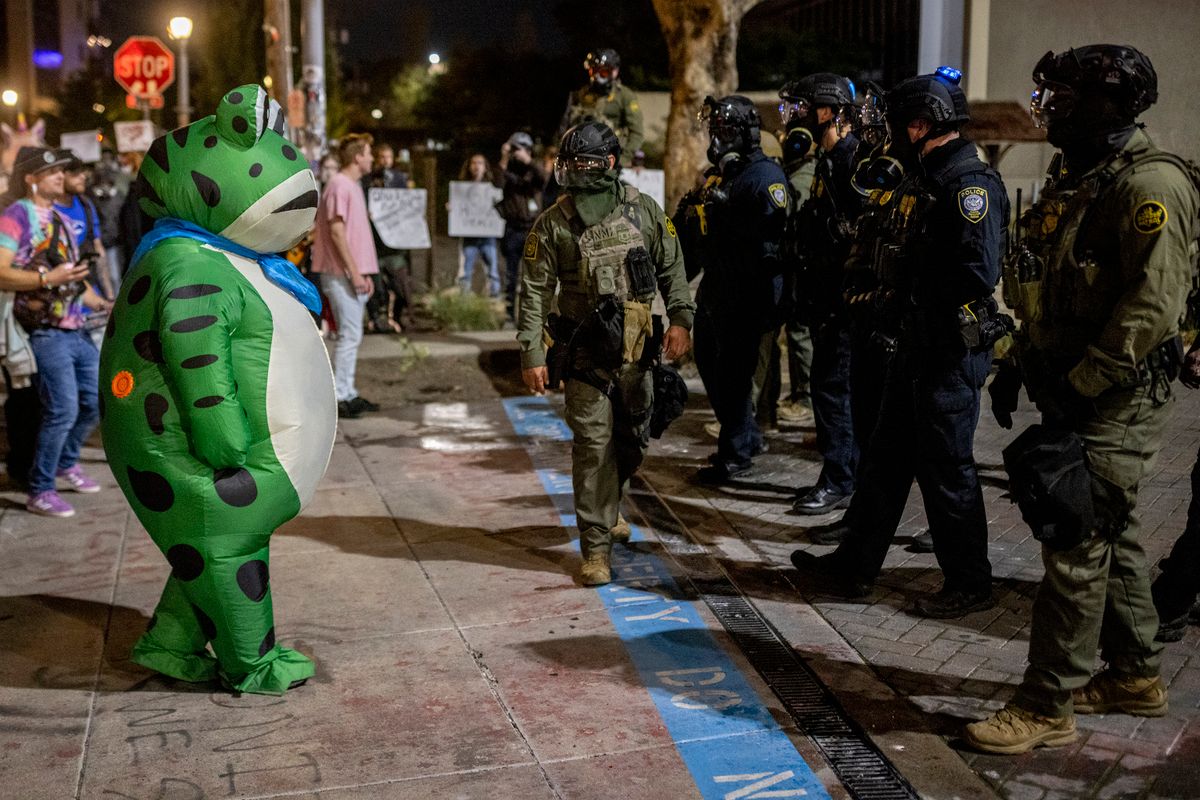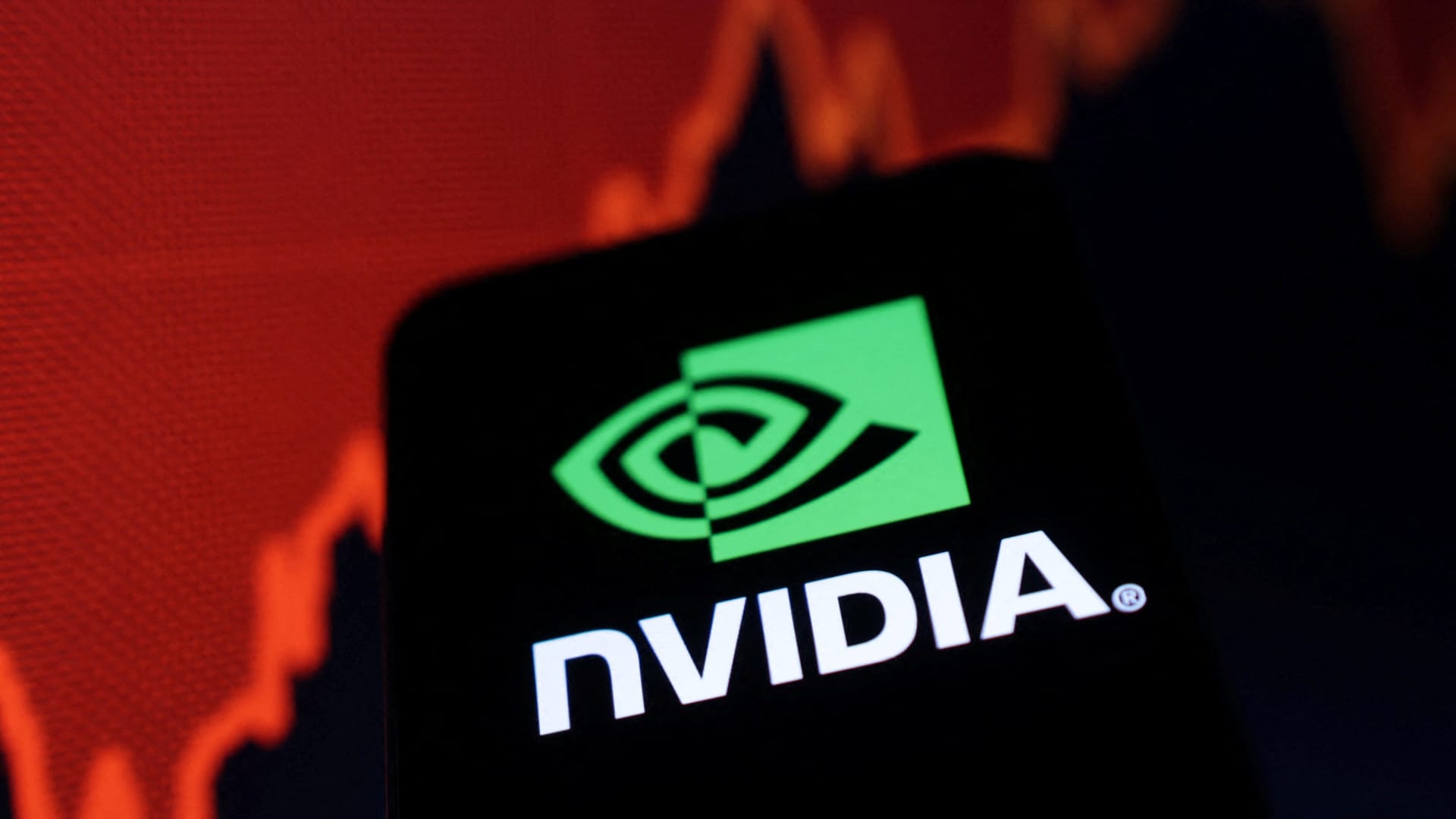Copyright The Marshall Project

Protesters dressed as everything from hot dogs to unicorns were among the millions who joined the “No Kings” marches across the U.S. last weekend. Many were inspired by the Portland Frog Brigade, a group of people who have been donning inflatable frog costumes outside the city’s Immigration and Customs Enforcement facility to protest against recent raids and deportations. While they may look ridiculous, participants say that’s intentional: It helps counter the rhetoric from President Donald Trump and other Republicans that people protesting ICE and the National Guard deployments in U.S. cities are violent extremists. The absurd getups can also defuse tension with armed forces dressed in riot gear. And when one federal agent did use pepper spray on an inflatable frog, directed into the costume’s air vent, it created a shocking, indelible image. These outfits are just the latest iteration in a long history of using whimsy and humor in political protests, known as “tactical frivolity.” L.M. Bogad is a performance artist, author of the book “Tactical Performance: The Practice and Theory of Serious Play” and a professor of political performance at the University of California, Davis. He also co-founded the Clandestine Insurgent Rebel Clown Army, a troupe launched during the George W. Bush administration. The Marshall Project spoke with Bogad about why a horde of puffy animals is the new emblem of the anti-Trump resistance. This conversation was edited for length and clarity. The Marshall Project: Can you explain what “tactical frivolity” means? L.M. Bogad: I first came across the term in the ’90s, when folks were protesting against corporate globalization. There were these very militarized police responses that were really overkill, and folks just started showing up dressed as fairies and elves and all kinds of things with fabulous wings, just to underscore how ridiculous the overreactions from police forces were in different countries. So it was a tactic, both to be self-expressive, to be beautiful or funny or silly, in order to attract more people to participate in the demonstrations by making it honestly fun, but also to expose to the world and the media that, “This is not an appropriate event to bring tanks and massive amounts of weaponry to control.” But if you think about it, it goes back much further. It goes back to carnival protests in the Middle Ages, where folks were saying very edgy things in public about the church or the king, but they had to do it in a way that made themselves absurd or silly so they could get away with it safely. Here in the States, these are peaceful social movements but they’re being portrayed in such a way that is so aggressive and dehumanizing, to create a permission structure for violent repression [from the authorities]. It’s a cultural setup from above to make it possible at some point to be super repressive. What do we do on the chessboard, culturally? What’s our countermove? Let’s be frogs. Let’s be funny stuffed animals and dinosaurs and things like that. There’s that willingness to make yourself ridiculous that can be very disarming. You know, someone in the frog costume, unless you really have a problem, it’s hard to stay mad at that guy, right? What impact does this approach have on the overall environment at a protest? It makes it more fun to go. And people are like, “You know what? That was my first protest. I think I’ll go to the next one. It was more fun than I expected.” It’s basically like a people’s costume ball, where everyone you know is there, you don’t need an invitation. Just show up. What’s your funny idea? Bring it. And so there’s that element of participation too, where it’s not just sort of top-down. When you have this kind of tactical frivolity and an open, carnival-esque feeling to the demonstration or the march, we are not just saying what we’re against. We are saying what we are for. And that’s a big part of building a movement. Let’s give a vision of the good things that we are for, and that can include a more open, vibrant, funny society where we have more fun together. What do you say to people who say these costumes aren’t serious enough to meet the moment? Serious does not have to mean solemn. Sometimes a situation is really dire, and you have to show that you take it so seriously, that you’re willing to put in the harder work to be funny. Comedy is hard. It’s only one tactic. You need all the serious and solemn tactics as well. You can have a very serious candlelight vigil. You can have very serious speeches. My one concern is, sometimes that kind of work falls into the realm of cliche. You’re doing it exactly the way you’ve done it every time. It makes it very easy to ignore you. So even if you’re being very solemn in your seriousness, please be original. Put the extra work in to make it interesting to people that do not already agree with you. You can be playful while you are super, super serious. And play has a role in very serious movements, and it always has. Satire is not the only technique, but it’s an indispensable tool to have in the toolkit of social movements. How have you used this in your own work? The Clandestine Insurgent Rebel Clown Army was the idea of combining civil disobedience and actual clowning skills. We were able to sometimes be in between the protests and the police creating a sort of clowny cushion. But also we were quite mediagenic, and we attracted a lot of media attention, to then make points about the issues. The Clown Army showed me that you can achieve something I like to call “the irresistible image.” That is simply an image that expresses the point you are trying to make. It’s not just an abstract idea, but you’ve created an image through your street action that is so strange or surprising that even your ideological opponents will reproduce the image, and therefore they’re helping you tell your story. It applies to Portland today as well, with the frogs. Another example was during the 2020 election, the Trump administration was really trying to say, “Hey, you shouldn’t vote by mail.” I just had the thought that, what if the mailboxes came to life to say, “Hey, we’re totally fine. We’re just honest civil servants.” So, with the help of Strike Anywhere Performance Ensemble and the Farm Arts Collective, we organized a singing and dancing group of living mailboxes and ballot boxes. We were mailboxes running around, but we attracted a lot of attention. It was entertaining. It was de-escalating. You talked about how silliness can defuse tension with officers. What about with counterprotesters? At one point in Philadelphia [in 2020], there were some pretty aggressive folks demonstrating who wanted to stop the counting of the votes because [Trump was leading in early returns], and they thought it was illegal to keep counting people’s votes. People were a little aggressive, and I just said, let’s put our mailboxes in between [the two groups of protesters]. I was wishing my mailbox was not cardboard, was actually bulletproof, but it wasn’t. But we just danced around, and we got in the way. I think it served a purpose.



